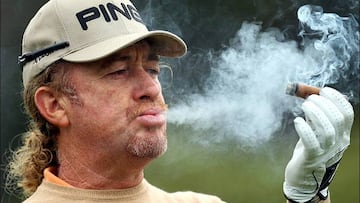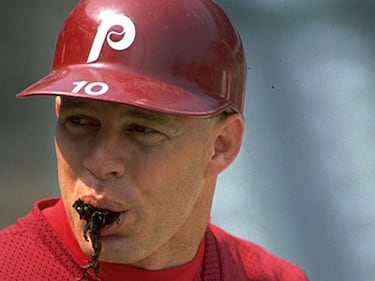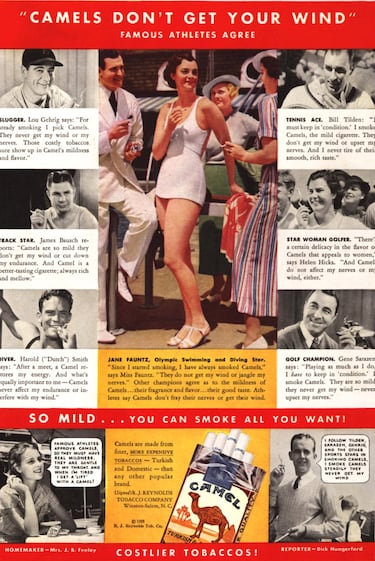Tobacco in sports: from sponsor to enemy
The relationship between professional athletes and this drug has changed radically in the last 50 years, without ever eradicating it.

It wasn’t long ago that tobacco was just another guest on restaurant tables, a student in university classrooms, and a pastime on airplanes and buses. A transversal presence that even reached outpatient clinics and hospitals. The world of sports was also no stranger to this drug, far from it.
For many years, far from being seen as a product harmful to sports performance, it was considered an enhancer, especially in varieties such as snuff, snuff, or chewing. Clubs and international organizations, such as the IOC or FIFA, embraced the money from tobacco companies and shamelessly displayed their logos on kits, billboards, or scoreboards. Watching Serie A on television meant repeatedly coming across images of Carlo Ancelotti or Zdenek Zeman smoking on the bench, and tuning into golf exponentially increased the chances of finding Miguel Ángel Jiménez or John Daly lighting a cigar.
A marketing strategy
You don’t have to be a lynx. However, surely, at the time, some advertising creative was applauded for the idea of seeing potential in the union of tobacco and sports from the perspective of the tobacco industry. Associating your product with teams and athletes meant associating it with health, a sculpted body, and a full life.

The relationship between the two worlds goes a long way; from the end of the 19th century, several brands began to market collectible cards and packages for soccer players. By then, the practice was already widespread in the United States, associated with baseball, the favorite sport of manufacturers on the other side of the Pacific. Shortly after the founding in 1876 of the National Baseball League, one of the two leagues that today make up the MLB, it was common to see posters of Bull Durham, at that time a chewing tobacco giant, on the facades of the stadiums.
Cigarettes instead of sweets
The beginning of the 20th century was a new offensive by tobacco companies, an attempt to reinforce the mental association between their product and a healthy lifestyle. With a conceptual novelty: smoking makes men more men. “To maintain a good figure, smoke Lucky instead of eating sweets,” said an advertisement for Lucky Strike. Some brands of chewing tobacco warned that its use “can generate the need to act like a man.”
Between the 1920s and 1940s, each MLB team was sponsored by a different brand, and players such as Babe Ruth, Lou Gehrig, and Joe DiMaggio lent their image to advertisements, such as one from Camel that also included the famous golfer Gene Sarazen stating: “Playing as much as I do, I have to stay in shape. That’s why I smoke Camel. Their cigarettes are so smooth that they never leave me breathless or upset my nerves.”

The link with baseball became so close that, according to a study by Toby Mündel collected on the website of the National Institutes of Health of the United States (can be consulted here), by 2003, when the trend, both at the regulatory level as social, it was already gradually expelling this drug from the world of sports, 36% of MLB players stated that they were still using chewing tobacco.
The performance myth
The widespread use of chewing tobacco in baseball is associated with the notion above that it enhances aspects of baseball performance, such as concentration. This belief refutes Mündel’s work, which compiles a series of studies on the subject focused on specific areas.
Of the three focused on the analysis of muscle strength, he points out, one does not find any relationship, another shows an ergogenic effect (that is, an increase in muscle tissue and its energy production rate) and another, one ergolytic (the opposite of ergogenic). Regarding the maximum resistance capacity of five, only one demonstrated an ergogenic effect of nicotine. Of four focused on high-intensity exercise, only one associated positive effects with tobacco consumption. In the 10 collected on physical performance, 12 of the 16 tests carried out showed no impact; two showed an ergogenic effect, and another showed an ergolytic effect. In this case, intuition and reality go hand in hand.
The last years of splendor
The last third of the 20th century was the later period of splendor for tobacco companies. Spurred by the advertising boom accompanying the economic recovery after the Second World War, they entered compelling showcases. The reader will remember RJ Reynolds as the primary sponsor of the soccer World Cup that Spain hosted in 1982, and anyone who saw the 1980 Winter Olympics would surely realize that the U.S. Tobacco Company sponsored them. Fans of the motor world will not have forgotten the not-too-distant times in which it was common to see competition motorcycles screen-printed with the Lucky Strike logo, or the almost monopoly of Rothmans in advertising for the World Endurance Championship in the 80s, or the Marlboro cars.

When the legislation began to go against them, a trend that would become especially hard between the 90s and the first decade of this century, when the majority of countries in the world began to approve regulations against the consumption and advertising of these drugs, they found loopholes and legal loopholes to sneak through. For example, in the 1996 Atlanta Games, when tobacco advertising was already prohibited, Philip Morris played a leading role during the Olympic event by placing eight glass-enclosed smoking rooms at the city’s airport.
These companies have never skimped on resources to promote themselves. According to the United States Federal Trade Commission, in 1999 alone, the industry invested a whopping $8.24 billion in advertising. By 2003, the figure had reached 15,120 million, 36 a day, a historical ceiling. From there, the numbers would go down.
The decline of the 21st century
Although there were already unconvincing attempts as early as 1964 when the United States approved the Tobacco Advertising Code, which prohibited athletes from participating directly in advertisements and was ineffective, the actual decline of the relationship between tobacco and sport occurred in the first decade of the 2000s. The last games that had a tobacco company among their sponsors were those in 1984, and for the World Cup in South Africa in 2010, FIFA introduced a tobacco policy for the first time. smoke-free facilities. It was the same period most developed countries began to banish this product from public spaces. At the same time, several important figures in the sports industry began to campaign against smoking. Among them are the baseball star Sammy Sosa, the skater Tony Hawk, and the basketball player Alonzo Mourning.

The present: a residual presence
Today, the links between tobacco and sport are limited to a handful of athletes who do not hide their habit. And this is so normalized that an elite athlete smoking becomes almost instantly a viral phenomenon, as the English golfer Charley Hull recently was after being filmed signing autographs with a cigarette in the mouth.
Related stories
Of course, the ban on smoking is practically generalized in all sports venues and in all renowned competitions that are held in closed spaces (golf, for example, is more tolerant in this regard and presents curiosities such as the policy of the Masters of Augusta, which only allows smoking cigars, although in practice cigarettes are not prosecuted). In the king of sports, football, the general trend is not to allow tobacco consumption in stadiums, perhaps reserving some sectors for smokers. As is the case of Atlético, which nevertheless plans to free the entire Metropolitano of smoke in the near future.
It is curious in this context the recent love of some footballers with a remarkable career in the Premier League for snus, a product similar to chewing tobacco, which consists of small packets that are placed between the gum and lip and gradually release their nicotine load, greater than that of cigarettes. Players, including Jamie Vardy, Victor Lindelöf, and Emil Krafth, use them as a legal stimulant (although their sale within the European Union is only allowed in Sweden, a large producer, which cannot export it). Still, some have begun to acknowledge his addiction publicly. Concerned, the Association of Professional Footballers of England is already investigating the matter and offering its members awareness workshops on the effects of this variety, which, in addition to the usual risks, damages and blackens the gums more quickly than smoked tobacco. An effort to eradicate this small revival that recalls times when tobacco, far from being an enemy of sport, was one of its best friends.

